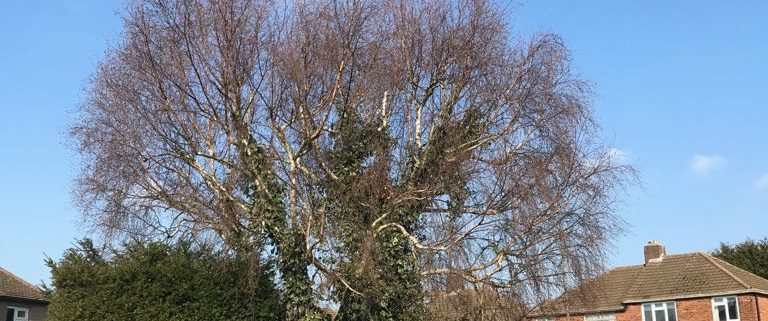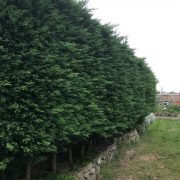Silver Birch Tree
Saving this beautiful Silver Birch Tree

Earlier last week JJ&B attended a property in Petts Wood, which at the front of this garden houses a stunning Silver Birch Tree. Unfortuantely Ivy had been growing up the trunk of the tree and preventing the tree from receiving it’s nutrients needed from the soil. Along with our recommendation our customer agreed for the Ivy to be removed in attempt to save the tree.
- A picture of the tree before our team removed the Ivy.
- Once the Ivy had been removed, leaving the tree able to receive nutrients for healthy growth.
Heres some more on Ivy…
What is it?
Ivy is a woody stemmed, self-clinging climber that can grow quickly to cover fences, walls and buildings. It is a cause for concern owing to its rapid pace of growth and worries about potential damage to the support structure.
Appearance
Ivy is recognised by its dense, evergreen foliage. In its climbing state it has three- to five-lobed glossy leaves.
It attaches itself to supports by producing aerial roots along the stems. When the stems are pulled away from the wall, they often leave behind the unsightly root ends, that persist and can often only be removed with wire brushes or pressure washing.
The problem
Self-clinging climbers such as Boston ivy and Virginia creeper (Parthenocissus sp.) do not usually cause damage to wall surfaces, but common or English ivy (Hedera helix sp.) supports itself by aerial roots and where these penetrate cracks or joints they may cause structural damage. Sound masonry is unaffected.
Its dense cover can hide defects in the fabric of the building and hinder maintenance work. Ivy may also provide access for intruders and harbour pests such as mice.
Where brickwork is sound, the main problem is to keep growth away from gutters and paint work.
It has been suggested that vegetation attached to walls could lead to dampness resulting from slower drying conditions following rain. This may be plausible on a south-west facing wall where the rain is driven by prevailing winds. However, other sources suggest that such plants will have a slight drying effect on mortar and will also provide some degree of insulation in winter, particularly evergreen ivies covering exposed north and east-facing walls.
Large climbers can pose a risk to buildings. Such problems are most likely with older property, those with shallow foundations and those built on clay soils.
If you have Ivy growing in an unwanted area, or need to bring some control to your Ivy feel free to get in contact for a free quotation either by email or by calling 0800 072 7755














